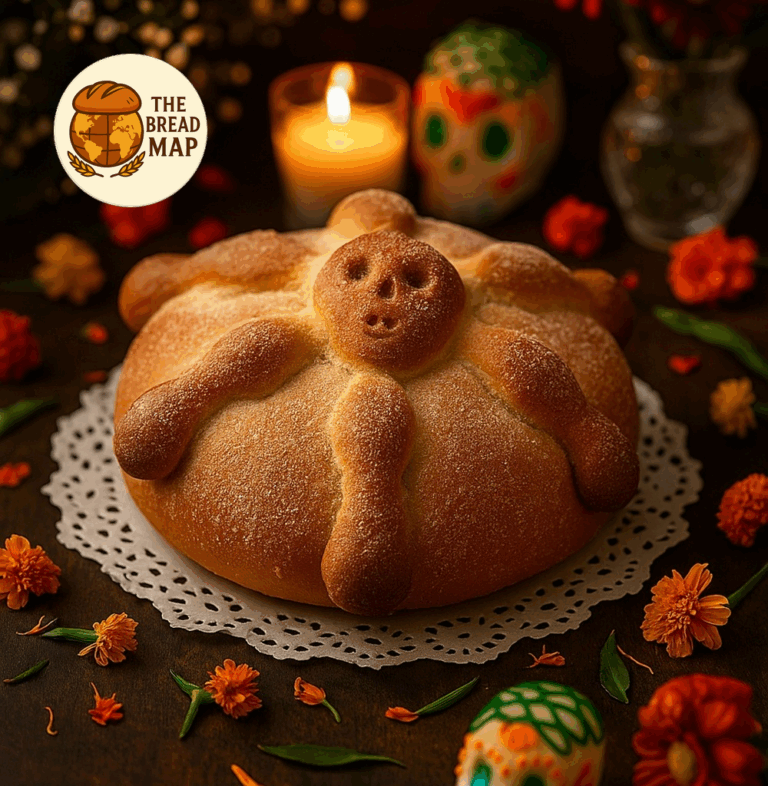
Pan de Muerto, or “Bread of the Dead,” is a fragrant, slightly sweet, and visually striking bread that holds a sacred place in Mexican culture. Baked especially for Día de los Muertos (Day of the Dead), this bread intertwines flavor and symbolism to honor the spirits of loved ones who have passed. With its delicate sugar-crusted top and signature bone-shaped decorations, each loaf is a heartfelt tribute grounded in both taste and tradition.
Historical Background
The origins of Pan de Muerto trace back to the pre-Hispanic rituals of the Aztecs, who honored the dead with offerings that included amaranth-based breads shaped like deities and adorned with human blood. With the arrival of Spanish conquistadors and the influence of Catholic customs, these ancestral traditions evolved. Wheat, introduced by the Spanish, replaced indigenous grains, and the ritual bread transformed into the softened, sweeter loaves we know today—infused with meanings of both reverence and celebration.
Region of Origin
While Pan de Muerto is now enjoyed across the entire country, its roots are most deeply embedded in central Mexico, particularly in Mexico City and the surrounding states such as Puebla and Oaxaca. Each region has developed its own take on the bread—some versions include sesame seeds instead of sugar, others are shaped in round or oval forms, with symbolic embellishments varying from place to place.
Ingredients and Preparation
This sweet, yeasty bread is distinguished by its tender crumb and floral aroma, often enhanced with citrus and spices. Common ingredients include:
- Wheat flour
- Butter and eggs
- Sugar
- Milk
- Orange zest or orange blossom water for a citrusy fragrance
- Anise seeds (optional, for a subtle licorice undertone)
Pan de Muerto dough is kneaded until smooth and elastic, left to rise, then artfully shaped. Traditional loaves feature a round base symbolizing the cycle of life, topped by “bones” and a central knob representing a teardrop or skull. After baking, it’s brushed with melted butter and generously dusted with sugar, creating a glistening surface that calls out for celebration.
Cultural Importance
Pan de Muerto isn’t just baked—it’s offered. During Día de los Muertos, families build elaborate altars (ofrendas) in their homes, decorated with marigolds, candles, photos, and food that the deceased enjoyed in life. Pan de Muerto is a fundamental part of these offerings—believed to nourish the souls on their journey back to visit the living. Sharing this bread during gatherings also fosters connection among the living, as they remember and celebrate lives that once brightened the world.
This delightful bread, with its sweet softness and evocative shape, is much more than a seasonal delight—it’s a testament to the enduring ties between life and death, family and memory, food and love. Whether enjoyed with Mexican hot chocolate or placed reverently on an altar, Pan de Muerto invites us to savor not only its flavor, but also its soul-deep significance.
Leave a Reply